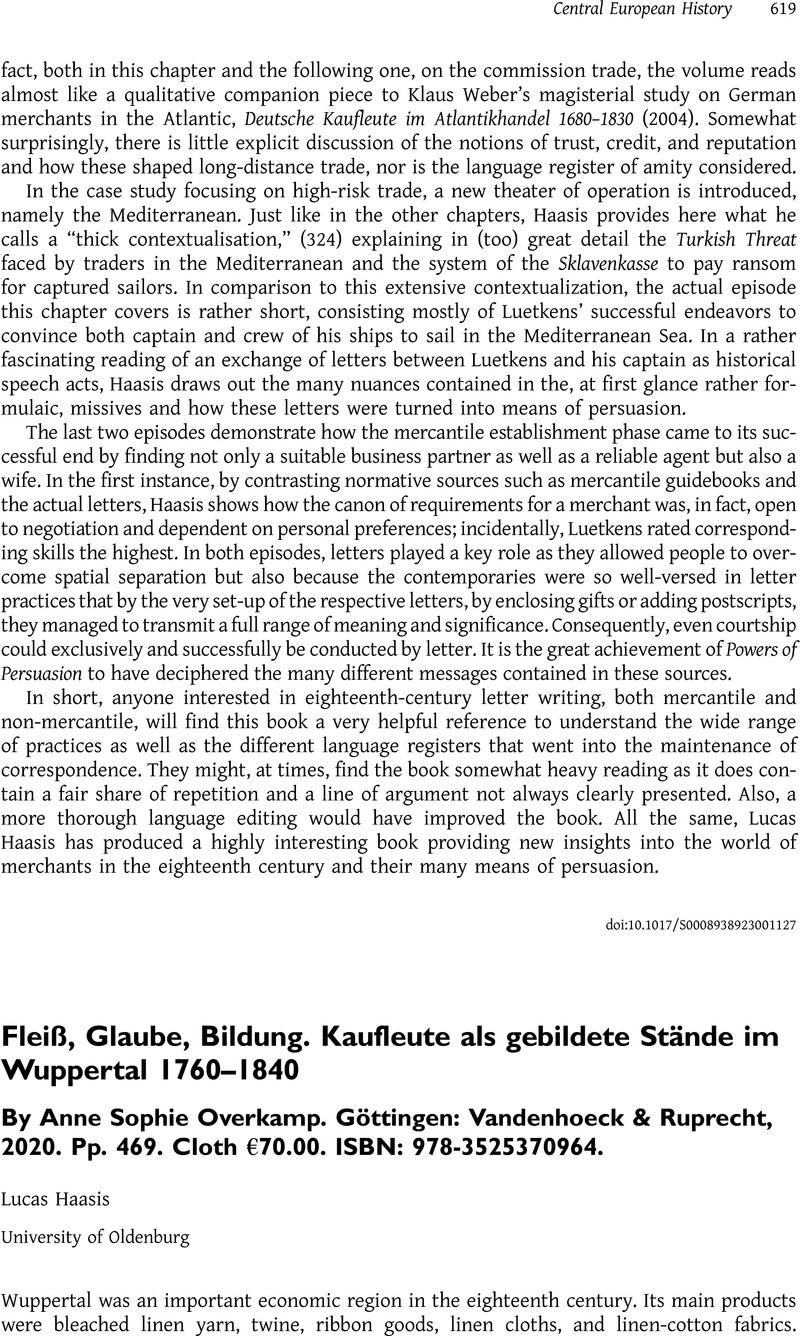No CrossRef data available.
Article contents
Fleiß, Glaube, Bildung. Kaufleute als gebildete Stände im Wuppertal 1760–1840 By Anne Sophie Overkamp. Göttingen: Vandenhoeck & Ruprecht, 2020. Pp. 469. Cloth €70.00. ISBN: 978-3525370964.
Review products
Fleiß, Glaube, Bildung. Kaufleute als gebildete Stände im Wuppertal 1760–1840 By Anne Sophie Overkamp. Göttingen: Vandenhoeck & Ruprecht, 2020. Pp. 469. Cloth €70.00. ISBN: 978-3525370964.
Published online by Cambridge University Press: 28 December 2023
Abstract
An abstract is not available for this content so a preview has been provided. Please use the Get access link above for information on how to access this content.

- Type
- Book Review
- Information
- Copyright
- Copyright © The Author(s), 2023. Published by Cambridge University Press on behalf of Central European History Society of the American Historical Association


